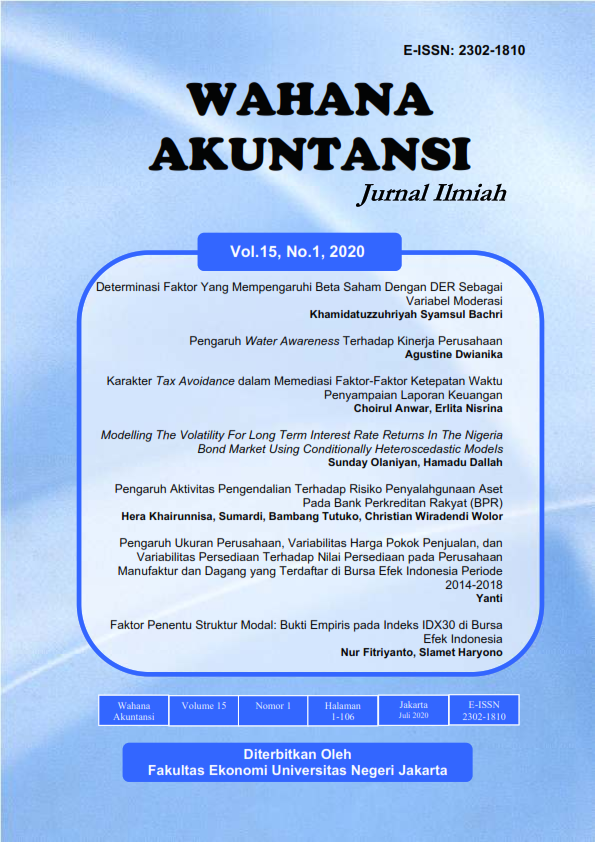MODELING THE VOLATILITY FOR LONG TERM INTEREST RATE RETURNS IN THE NIGERIA BOND MARKET USING CONDITIONALY HETEROSCEDASTIC MODELS
Abstract
Investigating the volatility of financial assets is fundamental to risk management. This study used generalized Autoregressive Conditional Heteroscedastic Volatility models to evaluate the volatility of the long term interest rate of Nigeria's financial market. We also incorporated three innovations distributions viz: the Gaussian, the student-t, and the Generalized Error Distribution (GED) in the modeling process under the maximum likelihood estimation method. The results show that GARCH (GED) is the most performing model for describing the volatility of three and twenty-year interest rate returns while TARCH (GED) is the most suitable model for describing the volatility of five and ten-year interest rate returns in Nigeria. The preferred models will help in the development of tools for effective risk management by monitoring the behavior of long term interest rates.

Jurnal Ilmiah Wahana Akuntansi is licensed under a Creative Commons Attribution-NonCommercial-ShareAlike 4.0 International License.
Articles in Jurnal Ilmiah Wahana Akuntansi are Open Access articles published under the Creative Commons CC BY-NC-SA License. This license permits use, distribution and reproduction in any medium for non-commercial purposes only, provided the original work and source is properly cited. Any derivative of the original must be distributed under the same license as the original.









